 W
WThe South-East Asian Theatre of World War II consisted of the campaigns of the Pacific War in Burma, India, Thailand, the Philippines, Indochina, Malaya and Singapore.
 W
W1940—1946 in French Indochina focuses on events that happened in French Indochina during and after World War II and which influenced the eventual decision for military intervention by the United States in the Vietnam War. French Indochina in the 1940s was divided into five protectorates: Cambodia, Laos, Tonkin, Annam, and Cochinchina. The latter three made up Vietnam. In 1940, the French controlled 23 million Vietnamese with 12,000 French soldiers, about 40,000 Vietnamese soldiers, and the Sûreté, a powerful police force. At that time, the U.S. had little interest in Vietnam or French Indochina as a whole. Fewer than 100 Americans, mostly missionaries, lived in Vietnam and U.S. government representation consisted of one consul resident in Saigon.
 W
WBattle of Northern Burma and Western Yunnan was the name of the Chinese campaign with their allies in the 1943–45 Burma Campaign. The campaign ended in an Allied victory.
 W
WThe Battle of Pakokku and Irrawaddy River operations were a series of battles fought between the British Indian Army and the Imperial Japanese Army and allied forces over the successful Allied Burma Campaign on the China Burma India Theater during World War II. The battles and operations were instrumental in facilitating the eventual capture of Rangoon in summer 1945.
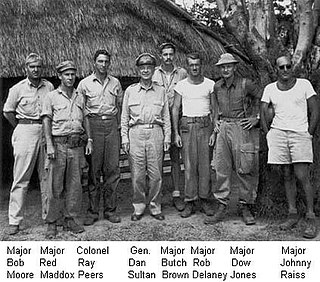 W
WBehind the Burma Road is a 1963 book by William R. Peers and Dean Brelis that describes the American guerrilla warfare operations, including those of OSS Detachment 101, during the Burma Campaign in the China Burma India Theater during World War II.
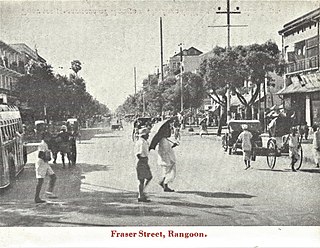 W
WThe bombing of Rangoon was a series of air raids conducted by the Imperial Japanese Army Air Service that took place between December 1941 to March 1942 during the Burma Campaign of World War II. The capital city of Rangoon was the first to be attacked after Japan executed air raids on Burma in preparation for its invasion of the country weeks following its declaration of war upon the United States and the United Kingdom on December 8, 1941.
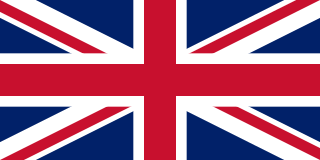 W
WThe British Military Administration (BMA) was the interim administrator of British Borneo between the end of the Second World War and the establishment of the Crown Colonies of Sarawak and North Borneo in 1946. Specifically, the entity lasted from 12 September 1945 to 1 July 1946. Labuan became the headquarters of BMA. The headquarters was mostly managed by the Australian Imperial Force (AIF).
 W
WThe Burma campaign in the South-East Asian Theatre of World War II took place over four years from 1942 to 1945. During the first year of the campaign, the Imperial Japanese Army with aid from Burmese insurgents had driven British forces and Chinese forces out of Burma, and occupied most of the country. From May to December 1942, most active campaigning ceased as the monsoon rains made tactical movement almost impossible in the forested and mountainous border between India and Burma, and both the Allies and Japanese faced severe logistical constraints.
 W
WThe fighting in the Burma campaign in 1944 was among the most severe in the South-East Asian Theatre of World War II. It took place along the borders between Burma and India, and Burma and China, and involved the British Commonwealth, Chinese and United States forces, against the forces of Imperial Japan and the Indian National Army. British Commonwealth land forces were drawn primarily from the United Kingdom, British India and Africa.
 W
WThe Burma campaign was a series of battles fought in the British colony of Burma. It was part of the South-East Asian theatre of World War II and primarily involved forces of the Allies; the British Empire and the Republic of China, with support from the United States. They faced against the invading forces of Imperial Japan, who were supported by the Thai Phayap Army, as well as two collaborationist independence movements and armies, the first being the Burma Independence Army, which spearheaded the initial attacks against the country. Puppet states were established in the conquered areas and territories were annexed, while the international Allied force in British India launched several failed offensives. During the later 1944 offensive into India and subsequent Allied recapture of Burma the Indian National Army, led by revolutionary Subhas C. Bose and his "Free India", were also fighting together with Japan. British Empire forces peaked at around 1,000,000 land and air forces, and were drawn primarily from British India, with British Army forces, 100,000 East and West African colonial troops, and smaller numbers of land and air forces from several other Dominions and Colonies.
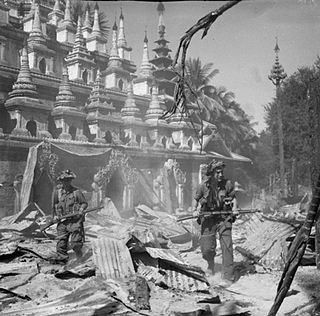 W
WThe Burma campaign in the South-East Asian Theatre of World War II was fought primarily by British Commonwealth, Chinese and United States forces against the forces of Imperial Japan, who were assisted to some degree by Thailand, the Burmese National Army and the Indian National Army. The British Commonwealth land forces were drawn primarily from the United Kingdom, British India and Africa.
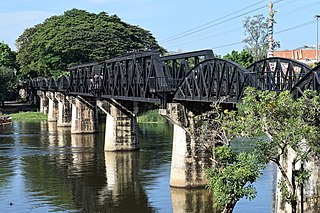 W
WThe Burma Railway, also known as the Death Railway, the Siam–Burma Railway, the Thai–Burma Railway and similar names, is a 415 km (258 mi) railway between Ban Pong, Thailand and Thanbyuzayat, Burma, built by prisoners of war of the Japanese from 1940–1944 to supply troops and weapons in the Burma campaign of World War II. This railway completed the rail link between Bangkok, Thailand and Rangoon, Burma. The name used by the Japanese Government is Tai–Men Rensetsu Tetsudō (泰緬連接鉄道), which means Thailand-Burma-Link-Railway.
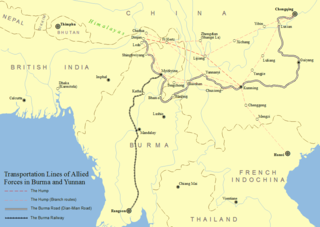 W
WThe Burma Road was a road linking Burma with southwest China. Its terminals were Kunming, Yunnan, and Lashio, Burma. It was built while Burma was a British colony to convey supplies to China during the Second Sino-Japanese War. Preventing the flow of supplies on the road helped motivate the occupation of Burma by the Empire of Japan in 1942. Use of the road was restored to the Allies in 1945 after the completion of the Ledo Road. Some parts of the old road are still visible today.
 W
WThe Japanese invasion of Burma was the opening phase of the Burma campaign in the South-East Asian theatre of World War II, which took place over four years from 1942 to 1945. During the first year of the campaign, the Japanese Army drove British Empire and Chinese forces out of Burma, then began the Japanese occupation of Burma and formed a nominally independent Burmese administrative government.
 W
WThe State of Burma was the wartime administration of Burma created by Japan in 1943 during the Japanese occupation of Burma in World War II.
 W
WAfter the outbreak of the Second World War, in the British Crown Colony of Ceylon, the government of Sir Don Baron Jayatilaka assured the British king and his majesty's government of its continued support.
 W
WChina Burma India Theater (CBI) was the United States military designation during World War II for the China and Southeast Asian or India–Burma (IBT) theaters. Operational command of Allied forces in the CBI was officially the responsibility of the Supreme Commanders for South East Asia or China. However, US forces in practice were usually overseen by General Joseph Stilwell, the Deputy Allied Commander in China; the term "CBI" was significant in logistical, material and personnel matters; it was and is commonly used within the US for these theaters.
 W
WOperation Cockpit was an Allied attack against the Japanese-held island of Sabang on 19 April 1944. It was conducted by aircraft flying from British and American aircraft carriers and targeted Japanese shipping and airfields. A small number of Japanese ships and aircraft were destroyed, and one American aircraft was lost. While the attack was successful tactically, it failed to divert Japanese forces from other areas as had been hoped.
 W
WThe Empire of Vietnam was a short-lived puppet state of Imperial Japan governing the former French protectorates of Annam and Tonkin between March 11 and August 23, 1945.
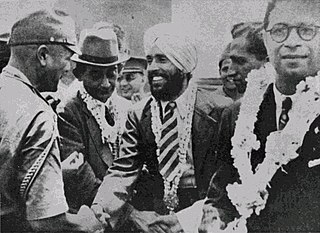 W
WFujiwara kikan was a military intelligence operation established by the IGHQ in September 1941. The Unit was transferred to Bangkok at the end of that month and headed by Major Fujiwara Iwaichi, chief of intelligence of the 15th army. Its task was to contact the Indian independence movement, the overseas Chinese and the Malayan Sultans with the aim of encouraging friendship and cooperation with Japan. The unit was notable for its success in establishing cooperative ties between the Empire of Japan and the Indian independence movement, overseas Chinese and various Malay sultans.
 W
WFar East prisoners of war is a term used in the United Kingdom to describe former British and Commonwealth prisoners of war held in the Far East during the Second World War. The term is also used as the initialism FEPOW, or as the abbreviation Far East POWs.
 W
WFort Hertz was a remote British Military outpost in northeastern Burma in the district of Putao in what is now the Kachin State near the present town of Putao. It was named after William Axel Hertz. Hertz led the first expeditions into the far north of Burma in 1888, was responsible for the 1912 Gazetteer of Kachin Hills area and served as the first Deputy Commissioner of the Government in the Putao District. The military post was established in 1914 and given the name Fort Hertz in 1925 on the retirement of William Hertz from the Indian Civil Service.
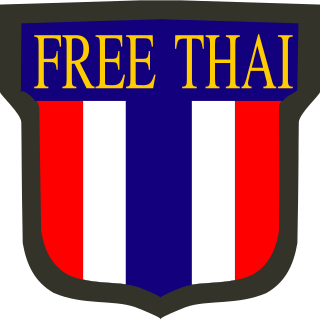 W
WFree Thai Movement was a Thai underground resistance movement against Imperial Japan during World War II. Seri Thai were an important source of military intelligence for the Allies in the region.
 W
WIn the northern-hemisphere summer of 1940 Germany rapidly defeated the French Third Republic, and colonial administration of French Indochina passed to the French State. In September 1940 Japanese troops first entered parts of Indochina; and in July 1941 Japan extended its control over the whole of French Indochina. The United States, concerned by Japanese expansion, started putting embargoes on exports of steel and oil to Japan from July 1940. The desire to escape these embargoes and to become self-sufficient in resources ultimately contributed to Japan's decision to attack on December 7, 1941 the British Empire and simultaneously the USA and at Pearl Harbor, Hawaii). This led to the USA declaring war against Japan on December 8, 1941. The US then joined the British Empire, already at war with Germany since 1939, and its existing allies in the fight against the Axis powers.
 W
WA hell ship is a ship with extremely inhumane living conditions or with a reputation for cruelty among the crew. It now generally refers to the ships used by the Imperial Japanese Navy and Imperial Japanese Army to transport Allied prisoners of war (POWs) and romushas out of the Dutch East Indies, the Philippines, Hong Kong and Singapore in World War II. These POWs were taken to the Japanese Islands, Formosa, Manchukuo, Korea, the Moluccas, Sumatra, Burma, or Siam to be used as forced labor.
 W
WThe Hump was the name given by Allied pilots in the Second World War to the eastern end of the Himalayan Mountains over which they flew military transport aircraft from India to China to resupply the Chinese war effort of Chiang Kai-shek and the units of the United States Army Air Forces (AAF) based in China. Creating an airlift presented the AAF a considerable challenge in 1942: it had no units trained or equipped for moving cargo, and no airfields existed in the China Burma India Theater (CBI) for basing the large number of transports that would be needed. Flying over the Himalayas was extremely dangerous and made more difficult by a lack of reliable charts, an absence of radio navigation aids, and a dearth of information about the weather.
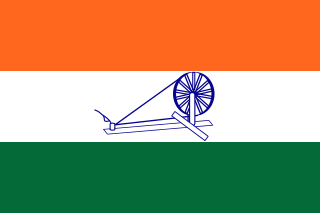 W
WThe Indian National Army was an armed force formed by Indian collaborationists and Imperial Japan on 1 September 1942 in Southeast Asia during World War II. Its aim was to secure Indian independence from British rule. It fought alongside Japanese soldiers in the latter's campaign in the Southeast Asian theatre of WWII. The army was first formed in 1942 under Rash Behari Bose, by Indian PoWs of the British-Indian Army captured by Japan in the Malayan campaign and at Singapore. This first INA collapsed and was disbanded in December that year after differences between the INA leadership and the Japanese military over its role in Japan's war in Asia. Rash Behari Bose handed over INA to Subhas Chandra Bose. It was revived under the leadership of Subhas Chandra Bose after his arrival in Southeast Asia in 1943. The army was declared to be the army of Bose's Arzi Hukumat-e-Azad Hind. Netaji Subhas Chandra Bose named the brigades/regiments of INA after Gandhi, Nehru, Maulana Azad, and himself. There was also an all-women regiment named after Rani of Jhanshi, Lakshmibai. Under Bose's leadership, the INA drew ex-prisoners and thousands of civilian volunteers from the Indian expatriate population in Malaya and Burma. This second INA fought along with the Imperial Japanese Army against the British and Commonwealth forces in the campaigns in Burma: at Imphal and Kohima, and later against the Allied retaking of Burma.
 W
WThe Japanese invasion of French Indochina was a short undeclared military confrontation between Japan and France in northern French Indochina. Fighting lasted from 22 to 26 September 1940, simultaneous with the Battle of South Guangxi in the Sino-Japanese War.
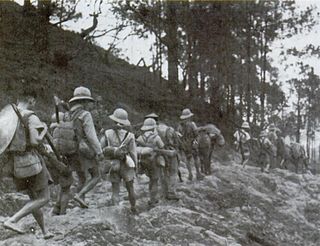 W
WThe Japanese coup d'état in French Indochina, known as Meigō Sakusen , was a Japanese operation that took place on 9 March 1945, towards the end of World War II. With Japanese forces losing the war and the threat of an Allied invasion of Indochina imminent, the Japanese were concerned about an uprising against them by French colonial forces.
 W
WThe Japanese invasion of Thailand occurred on 8 December 1941. It was briefly fought between the Kingdom of Thailand and the Empire of Japan. Despite fierce fighting in Southern Thailand, the fighting lasted only five hours before ending in a ceasefire. Thailand and Japan then formed an alliance, making Thailand part of the Axis' alliance until the end of World War II.
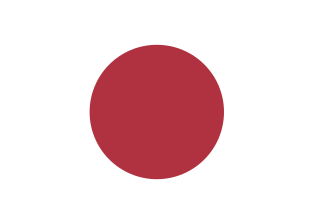 W
WBefore the outbreak of World War II in the Pacific, the island of Borneo was divided into five territories. Four of the territories were in the north and under British control – Sarawak, Brunei, Labuan, an island, and British North Borneo; while the remainder, and bulk, of the island, was under the jurisdiction of the Dutch East Indies.
 W
WThe then British colony of Malaya was gradually occupied by the Japanese between 8 December 1941 and the Allied surrender at Singapore on 16 February 1942. The Japanese remained in occupation until their surrender to the Allies in 1945. The first Japanese garrison in Malaya to lay down their arms was in Penang on 2 September 1945 aboard HMS Nelson.
 W
WThe Jesselton revolt was a revolt by a resistance movement known as the Kinabalu Guerrillas, comprising local Chinese, indigenous peoples, Eurasian and Sikh Indian of Jesselton, North Borneo and led by Albert Kwok, against the Japanese occupying forces of North Borneo.
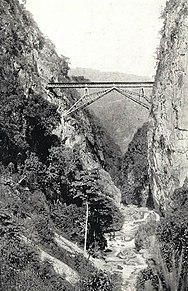 W
WThe Yunnan–Haiphong railway is an 855 km (531 mi) railway built by France during 1904–1910, connecting Haiphong, Vietnam, with Kunming, Yunnan province, China. The section within China from Kunming to Hekou is known as the Kunming–Hekou railway, and is 466 km long. The section within Vietnam is 389 km (242 mi) long, and is known as the Hanoi–Lào Cai railway. The railway was built with 1,000 mm gauge due to the mountainous terrain along the route. Currently it is the only main line in China using 1,000 mm metre gauge.
 W
WThe Ledo Road was an overland connection between India and China, built during World War II to enable the Western Allies to deliver supplies to China and aid the war effort against Japan. After the Japanese cut off the Burma Road in 1942 an alternative was required, hence the construction of the Ledo road. It was renamed the Stilwell Road, after General Joseph Stilwell of the U.S. Army, in early 1945 at the suggestion of Chiang Kai-shek. It passes through the Burmese towns of Shingbwiyang, Myitkyina and Bhamo in Kachin state. Of the 1,726 kilometres (1,072 mi) long road, 1,033 kilometres (642 mi) are in Burma and 632 kilometres (393 mi) in China with the remainder in India. The road had the Ledo-Pangsau Pass-Tanai (Danai)-Myitkyina--Bhamo-Mansi-Namhkam-Kunming route.
 W
WThe Malayan People's Anti-Japanese Army was a Communist guerrilla army that resisted the Japanese occupation of Malaya (1941-1945). Composed mainly of ethnic Chinese guerrilla fighters, the MPAJA was the biggest anti-Japanese resistance group in Malaya. Founded during the Japanese invasion of Malaya, the MPAJA was conceived as a part of a combined effort by the Malayan Communist Party (MCP) and the British colonial government, alongside various smaller groups to resist the Japanese occupation. Although the MPAJA and the MCP were officially different organisations, many saw the MPAJA as a de facto armed wing of the MCP due to its leadership being staffed by mostly ethnic Chinese communists. Many of the ex-guerrillas of the MPAJA would later form the Malayan National Liberation Army (MNLA) and resist the British occupation of Malaya during the Malayan Emergency (1948-1960).
 W
WMajor Arthur Moon was an Australian army doctor who saved the lives of dozens of Far East prisoners of war as the Thailand-Burma Railway was being constructed during World War II.
 W
WThe efficient running of the North-east Indian railways during World War II became critical to the success of the Allied war effort in the South-East Asian Theatre.
 W
WThe Northern Combat Area Command or NCAC was a subcommand of the Allied South East Asia Command (SEAC) during World War II. It controlled Allied ground operations in northern Burma. For most of its existence, NCAC was commanded by US Army General Joseph "Vinegar Joe" Stilwell. In 1945 after Stilwell was recalled, his deputy, Lieutenant General Daniel Sultan, was promoted to and assumed command.
 W
WMV Ondina was an oil tanker built in 1939 and owned by Royal Dutch Shell; initially operated by the La Corona shipping company. In November 1942, during the Second World War, it was attacked in the Indian Ocean by two Japanese commerce raiders, one of which was sunk possibly by a shell fired by the Ondina. After the war it continued operating until decommissioned and broken up in 1959.
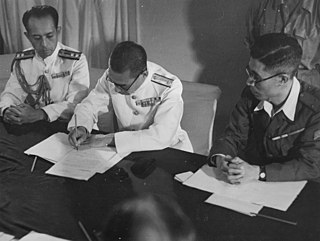 W
WOperation Jurist referred to the British recapture of Penang following Japan's surrender in 1945. Jurist was launched as part of Operation Zipper, the overall British plan to liberate Malaya, including Singapore.
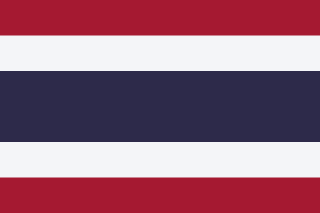 W
WSaharat Thai Doem was an administrative division of Thailand. It encompassed parts of the Shan States of British Burma annexed by the Thai government after the Japanese conquest of Burma.
 W
WShingbwiyang [Shing Bwi Yang/Tawa], Kachin State, is a town in Burma. The town was located in the China Burma India Theater during World War II, and the Ledo Road and an airbase were built there during this period. It is also known as Tawa Gaq. There are 90 permanent people living in the township of Naga. It is linked to Tarung, a large Naga village adjoining Tanai Town, and to the north-west links with Nanyun (Taiyawng) Town.
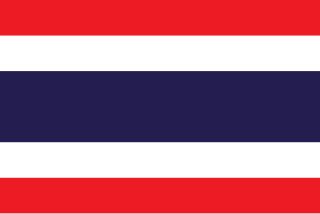 W
WSi Rat Malai is a former administrative division of Thailand. It included the four northern states of Kedah, Perlis, Kelantan, and Terengganu in British Malaya annexed by the Axis-aligned Thai government after the Japanese invasion of Malaya.
 W
WThe sinking of Prince of Wales and Repulse was a naval engagement in World War II, as part of the war in the Pacific, that took place on 10 December 1941 in the South China Sea off the east coast of the British colony of Malaya, 70 miles east of Kuantan, Pahang. The Royal Navy battleship HMS Prince of Wales and battlecruiser HMS Repulse were sunk by land-based bombers and torpedo bombers of the Imperial Japanese Navy. In Japanese, the engagement was referred to as the Naval Battle of Malaya .
 W
WThe Battle of Sittang Bridge was part of the Burma campaign during the Second World War. Fought between 19 February and 23 February 1942, the battle was a victory for the Empire of Japan, with many losses for the British Indian Army, which was forced to retreat in disarray. Brigadier Sir John George Smyth, V.C.—who commanded the British Indian Army at Sittang Bridge—called it "the Sittang disaster".
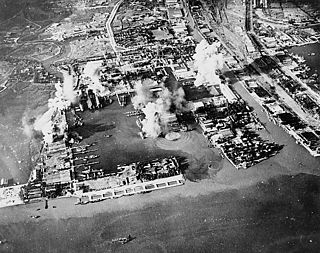 W
WOperation Transom was an attack made by Allied forces against the Japanese-occupied city of Surabaya on 17 May 1944 during World War II. It was conducted by the British-led Eastern Fleet, and involved aircraft launched from American and British aircraft carriers bombing the city's docks and an oil refinery. One American torpedo bomber was shot down, and two British torpedo bombers were lost in accidents.
 W
WThe Women's Auxiliary Service (Burma) also known as the Chinthe Women because of the mythological creature that formed their badge. The unit was formed on 16 January 1942 and disbanded in 1946. They were a 250 strong group of British and Australian women who manned Mobile Canteens for the troops of Burma Command in World War II. They were founded and led by Mrs Ninian Taylor, who was granted the rank of Major and her services were an OBE for her services
 W
WX Force was the name given to the portion of the National Revolutionary Army's Chinese Expeditionary Force that retreated from Burma into India in 1942. Chiang Kai-shek sent troops into Burma from Yunnan in 1942 to assist the British in holding back the Japanese. These Chinese forces became broken up, and in the retreat out of Burma part of these forces entered India. These were cantoned at Ramgarh Cantonment in the Bihar Province, brought up to five-Division strength, and re-equipped and re-trained by American instructors at British expense.